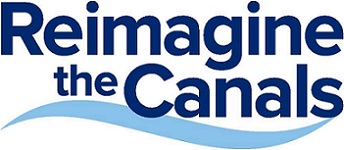Background
History
Prior to the construction of a canal system in New York, commercial activity was limited to the east side of the State, where natural waterways and streams exist. To promote growth further west, and ensure the state’s role in international trade by connecting inland points to the Port of New York, the Erie Canal was constructed between 1817 and 1825. When it opened, the Erie was the second-largest canal in the world and an engineering marvel of its time. It relied on a series of 83 locks to collectively navigate a 568-foot elevation change between Albany and Lake Erie, and could accommodate boats carrying up to 30 tons of freight at a time – revolutionizing commercial shipping and initiating a canal boom across the nation. By certain accounts, the Erie Canal reduced bulk commodity freight costs by as much as 90 percent.
As people started settling further west in New York State, forests gave way to industry. This, in turn, led to the growth of hamlets and villages founded on maritime-related commerce, and allowed New York City to overtake Philadelphia as the nation’s chief seaport. During this period, the value of real estate in the “Empire State” increased faster than its population, personal property grew to nearly four times its former value, and manufacturing volumes expanded threefold. The Erie Canal was also a financial success: it took only nine years of tolls collected on cargo shipments to cover the entire cost of construction. Considered one of the most transformative and successful public work projects in American history, the Erie Canal came to define the development of cities and towns throughout upstate New York: today, 200 years later, nearly 80 percent of the upstate population lives within 25 miles of the historic waterway.
To keep pace with growth in commercial traffic, the Erie Canal and its main branches were enlarged twice. By 1862, the Canal System could handle boats carrying up to 240 tons of freight, a massive increase from the first boats of 30-ton capacity. By 1892, the state had earned $42 million (equivalent to $1.07 billion today) over and above all costs of initial construction, subsequent enlargements, maintenance and operation, and became a free mode of transportation with the abolition of tolls. In 1903, the system was again enlarged by the construction of the “Barge Canal,” which would be expanded to include the three other main branches of today’s Canal System, the Champlain, the Oswego and the Cayuga and Seneca Canals; all of which were opened between 1910 and 1920.
The Barge Canal’s engineering relied on the lowest watercourses in the valleys wherever possible, rather than simply creating larger artificial channels along higher ground. From Troy to Rome, the new Erie Canal was largely created by ‘canalizing’ the Mohawk River; the old canal, which paralleled the Mohawk River, was abandoned. West of Rome, the canal passes through Oneida Lake and the Oneida River, and then through the Seneca and Clyde Rivers to a point near Rochester. West of Rochester, an artificial channel was constructed to Lockport; beyond that the Canal uses the Tonawanda Creek to get to the Niagara River. The Oswego branch is the canalizing of the Oswego River to Lake Ontario; for much of its length the Champlain Canal is the canalizing of the Hudson River to Lake Champlain.
Vessel traffic on the Canal System peaked in the early 1950s, when over five million tons of cargo were being shipped annually. However, commercial traffic has declined steadily since the opening of the St. Lawrence Seaway in 1959 and increased competition from railways, petroleum product pipelines, and the interstate highway system. Recreational boating on New York’s canals remained robust longer and peaked in 1989, but has declined by over 50 percent since then, with four out of the five lowest-use years on record occurring in the last five years.
In 1992, state legislation transferred responsibility for operation and maintenance of the Canal System from the New York State Department of Transportation to a newly formed subsidiary of the New York State Thruway Authority, called the New York State Canal Corporation. With this act, the dozens of towns, villages, and hamlets of historical and cultural significance embarked on an effort to revitalize the Canal System as a tourist and recreational destination. Recognizing its historical significance, the Canal System was listed as a national historic district on the National Register of Historic Places in 2014 and designated as a National Historic Landmark in 2017.
Earlier this year, the New York Power Authority assumed control of the Canal System from the New York State Thruway Authority. NYPA is now initiating a strategic planning process to ensure the long-term vitality of the Canal System.
Previous Initiatives
This Reimagine the Canals Competition builds on a number of recent initiatives. In 1992, the New York State Canal Recreationway Commission was created to advise the Thruway Authority and Canal Corporation on canal-related activities. The Commission developed the Canal Recreationway Plan in 1995 and the New York State Canal Revitalization Program in 1996, which focused on developing elements of the Canal System including harbours, service port and lock projects, and the Canalway Trail.
In 2000, Congress established the Erie Canalway National Heritage Corridor. Subsequently, a 27-member Commission was created and charged with developing and implementing a Preservation and Management Plan for the Corridor in concert with federal, state, and local governments, non-profit organizations, and private businesses. The vision was to preserve the area’s history, provide recreational and educational opportunities, foster economic revitalization, and improve the overall quality of life in Corridor communities.
The Canalway Grant Program, established by the Canal Corporation in 2011, allows municipalities and non-profit organizations along the Canal System to apply for grants for canal related capital projects. Awards are coordinated through the appropriate Regional Economic Development Councils.
